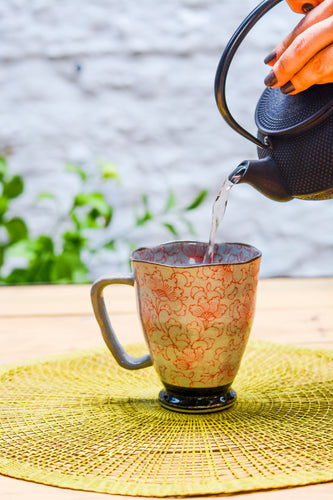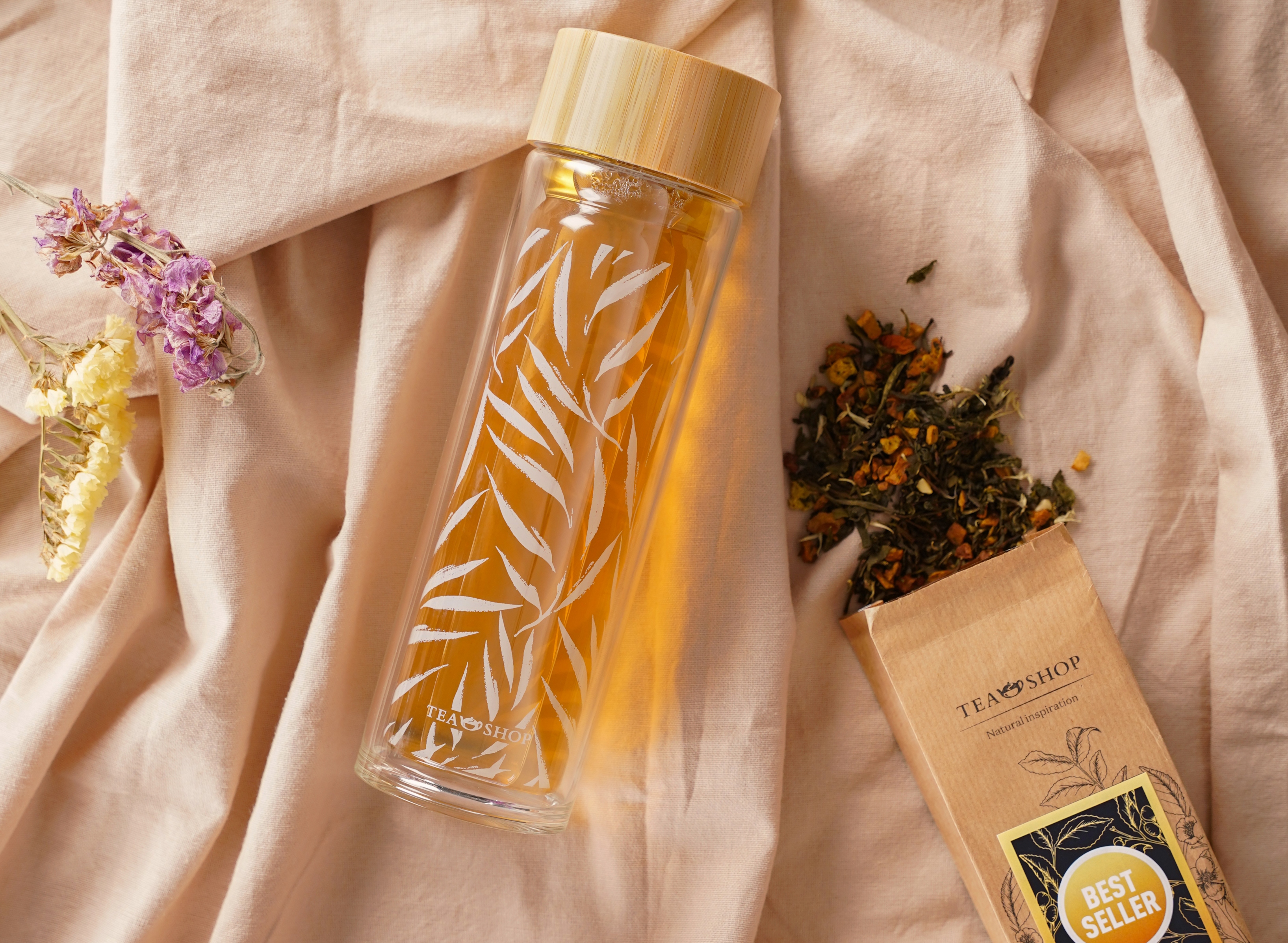
Properties of white tea: discover everything it can provide you
Far less known in the West than the other types of tea such as black tea, Green Tea and Red tea (Pu-Erh), White tea deserves our full interest thanks to its exclusive flavor and the incredible properties and benefits it offers. What does it offer the body?
Delicate and subtle and at the same time, sweet and floral, white tea has quickly become one of the most sought after and appreciated blends by tea connoisseurs.
White tea goes through an absolutely minimal treatment process that allows it to retain and take advantage of all its components and nutrients, in particular its great richness in antioxidants. Known as the beauty tea, white tea helps us look after ourselves both inside and out.
Discover all the properties of white tea, and how this delicate drink can benefit you!
WHITE TEA: FEATURES AND HISTORY
Before we delve deeper into the benefits of white tea, let's understand more about white tea’s general characteristics and what this valuable drink is comprised of. White tea comes from the tea plant, Camellia Sinensis, just as with more familiar varieties like green tea, black tea and red tea.
The difference is that, to obtain it, the leaves of the plant are used in their most natural state. It is obtained using the most tender shoots, which still retain the delicate white “fluff” that covers them, which is where it gets its name White tea. The leaves are collected, withered naturally and then dried.
White tea does not go through a process of rolling or oxidisation, so its full flavor features are preserved, and it produces a “lighter” tea than black or traditional teas.
Visually, we get a silvery-white tea with a silky and velvety texture that exudes luxury in every sense of the word! And it’s fair to say that white tea is an exclusive and luxurious tea.
The production and consumption of white tea originate in China. Although historical references are varied, many historical sources consider that white tea was first produced during the Tang Dynasty (618-907 AD).
White tea became the tea of choice for the traditional tea ceremony in Imperial China, representing one of the highest quality teas, produced with the most tender and select buds, for which reason it was a tea deemed worthy of being presented to emperors. Its consumption spread to the upper classes where it then went on to become popular, but it was always synonymous with luxury and a certain feeling of exclusivity. The improvement of the elaboration and storage processes of the delicate white tea allowed its sale to other regions of the world, but it was not until the 19th century that the name White tea appeared in an English publication and went on to became known in Europe.
WHITE TEA: USES AND WHAT MAKES IT SO SPECIAL
When we look at the benefits of white tea, the following features stand out:
- White tea effectively protects your body’s cells, representing the tea that is highest in antioxidants.
This is because, during its preparation, white tea leaves are not subjected to oxidation processes (picking, withering, drying, and nothing else at all, remember?).
In this way, its natural antioxidants are neither degraded nor changed, and its powers can be fully exploited.
Catechins, a type of antioxidant present in large quantities in white tea, neutralize the propagation of free radicals, responsible for the degradation of cell membranes, and delays cellular aging throughout the body.
- White tea looks after your skin. White tea is a perfect anti-aging drink! The antioxidants in white tea protect your skin, keep it hydrated and prevent the appearance of wrinkles.

- It is perfect for drinking as part of slimming diets: It has a great diuretic power and helps eliminate toxins that build up naturally in the body.
- Contributes to good oral health: The antioxidants in white tea have an anti-inflammatory, antibacterial and antiviral effect.
With its antimicrobial properties, white tea helps reduce plaque, prevents the formation of cavities and the inflammation of the gums.
It is also known to eliminate bad breath.
- Contributes to the lowering of cholesterol: studies have shown that, thanks to catechins, white tea helps reduce total cholesterol and LDL (the "bad" cholesterol) and protects LDL particles from oxidation.
Drinking white tea is also associated with a lower risk of suffering from cardiovascular diseases such as thrombosis, heart attacks, strokes or heart failure.
- Finally, it should be noted that, although they are still being researched, several studies point to the role of antioxidants in fighting against cancer and the growth of tumours, and their possible effects in combatting degenerative conditions like Parkinson's and Alzheimer's.
We are awaiting the results of these studies, with the hope that antioxidants can contribute even more to our state of health.

THE MOST APPRECIATED VARIETIES OF WHITE TEA
Compared to black or green tea, we find few variants of white tea. The best known are:
- The Silver Needles variety, originally from the Chinese province of Fujian, composed solely of unopened buds, on which you can see the typical white hairs or “fluff” of the plant that give it its silver colour.
It is one of the most famous and typical teas enjoyed across China. It is an exquisite and select tea, which is usually reflected in its price.
The collection of this tea (called imperial collection, as only buds are collected) is exclusively manual. It is safe to say that Silver Needles is the haute couture of white tea!
- The Pai Mu Tan variety, also from Fujian province, made up of a mixture of buds and leaves, with greenish and silvery tones.
In this case we are talking about fine harvesting, which consists of the bud and the two leaves that follow it. This variety’s harvesting process is also 100% manual, or handpicked.
It is a high-quality tea at a more affordable price. Along with Silver Needles, it is the best known and most frequently consumed white tea in the world.
-Gong Mei and Sho Mei. These varieties are found in the market, but they have inferior quality leaves.
Pure White Teas
At Tea Shop, we bring you two varieties of high quality pure white tea: Silver Needles and Pai Mu Tan, as well as flavoured white teas made from different types of top quality white tea.
Flavoured white teas
If you want to discover white tea, but you aren’t ready for a 100% pure tea, we strongly recommend our Gracia Blend White, a harmonious balance between flowers and fruits, with vanilla, orange peel, rose, cornflower and sunflower petals.
Or one of our Tea Lovers’ favourites: the Sakura Beauty Blend, a delicate blend of white tea, green tea, matcha, cherry, rosebuds, almonds, kiwi pieces, apple and cornflower petals. An impressive selection!
Our Strawberry Fresh blend is a delicious proposal with a touch of strawberry and basil that is also greatly appreciated by lovers of white tea.
Let yourself be enveloped by the delicacy of a cup of exclusive and refined white tea and feel like an emperor! Discover the best selection of White Tea at Tea Shop. Welcome to the world of white tea!
HOW CAN I MAKE WHITE TEA?
Steep 2g (1 measure) for every 200 ml at 75º for 3 minutes. It’s as easy as that!
Leave a comment
This site is protected by hCaptcha and the hCaptcha Privacy Policy and Terms of Service apply.